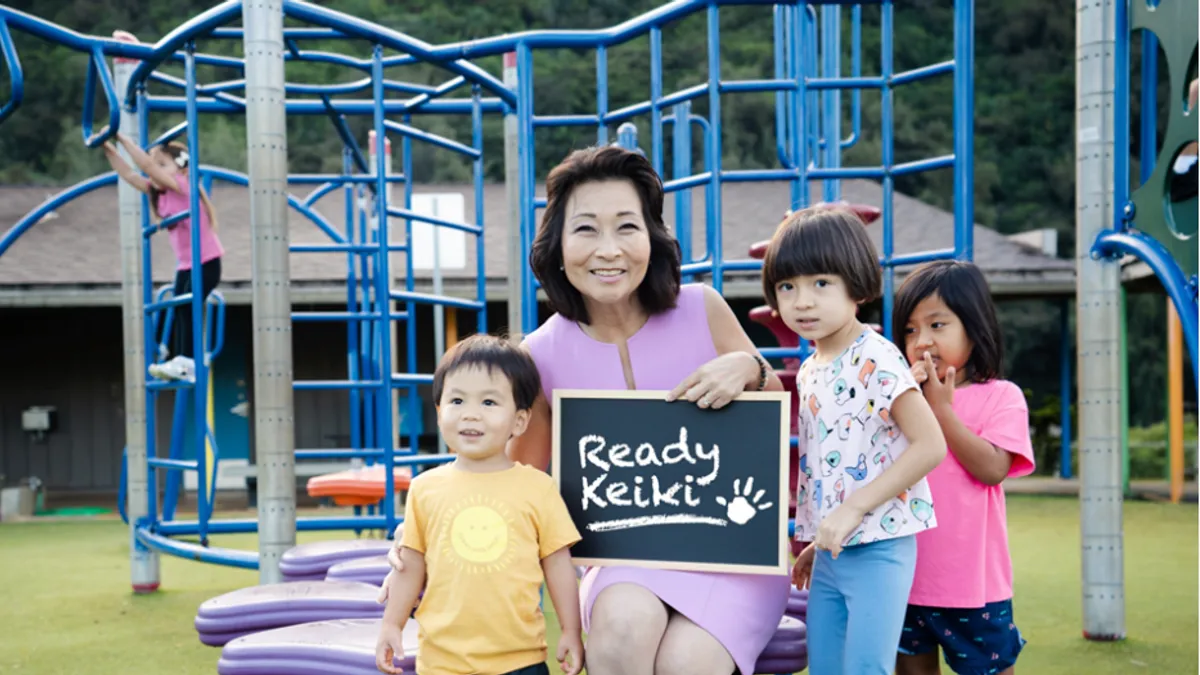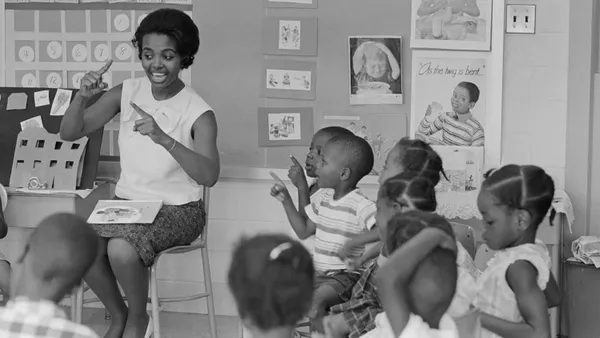Dive Brief:
- A multi-year plan in Hawaii to provide preschool opportunities for all 3- and 4-year-olds will start through efforts to build or refurbish 80 classrooms by August 2024 and aim for an additional 50 classrooms per year through 2032, state officials announced recently.
- The "Ready Keiki" plan — named for the Hawaiian word for "child" — aims to create 465 preschool classrooms over the next decade. These early learning sites will be located at new and existing school buildings, as well as at private businesses, libraries and universities. Additionally, the plan calls for developing teacher career pathways at high schools and universities.
- As states and communities look to scale up preschool offerings, leaders need to consider certain variables for high-quality instruction and governance such as low teacher-to-student ratio and sustainable funding, according to a January report from McKinsey & Co.
Dive Insight:
Hawaii, California, Michigan and New Mexico are among states dedicating money toward large-scale expansion of preschool programs.
“Children who have attended high-quality preschool or child care programs are much better prepared for success in Kindergarten, but not every family has access to early learning programs," said Hawaii Lt. Gov. Sylvia Luke in a statement. Luke is leading Hawaii's preschool expansion efforts. "If we can provide enough classrooms at an affordable price, we can make sure all of our keiki are ready to learn.”
In Hawaii, 18,921 youngsters ages 3 and 4 currently go to preschool, but another 16,351 either opt out or are underserved, according to the state. To build 80 new classrooms by 2024, the state is using $200 million approved last year by the state legislature.
The Ready Keiki initiative is a partnership of state and local governments, as well as public, private and nonprofit educational groups and philanthropic foundations.
Jade Jenkins, an associate professor at University of California, Irvine, has been studying early childhood policies. In a recent Q&A on the UCI website, Jenkins said states play a key role in setting policy for young children and their families.
California's plan to provide three hours of education for 4-year-olds is a "tectonic shift" for public schools and the child care industry in terms of supporting children's development and family employment, Jenkins said. California's universal pre-K investments for 2022-23 include guaranteed access for young students with disabilities, planning and implementation grants to districts and funding for transitional kindergarten programs.
However, challenges such as student transportation and how school hours align with parent work hours need to be considered, Jenkins said.
The McKinsey report highlighted instructional considerations for expanded public preschool. For example, the researchers said pre-K learning standards should be examined for their relevance to K-3 curriculum and expectations. Specialized training for educators in early learning approaches is another area of focus — and a challenge, given the current educator shortages.
Since only a few states dedicate pre-K allocations in their school funding formulas, policymakers need to determine where the revenue will come from once a state commits to expanding preschool, McKinsey said.
"There are certainly risks, particularly if the amount spent per child is insufficient for operating a quality program," the report said. "But there are steps states could take to design programs that fit local circumstances, resources, and goals.”








 Dive Awards
Dive Awards





